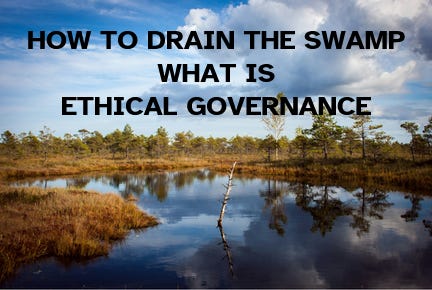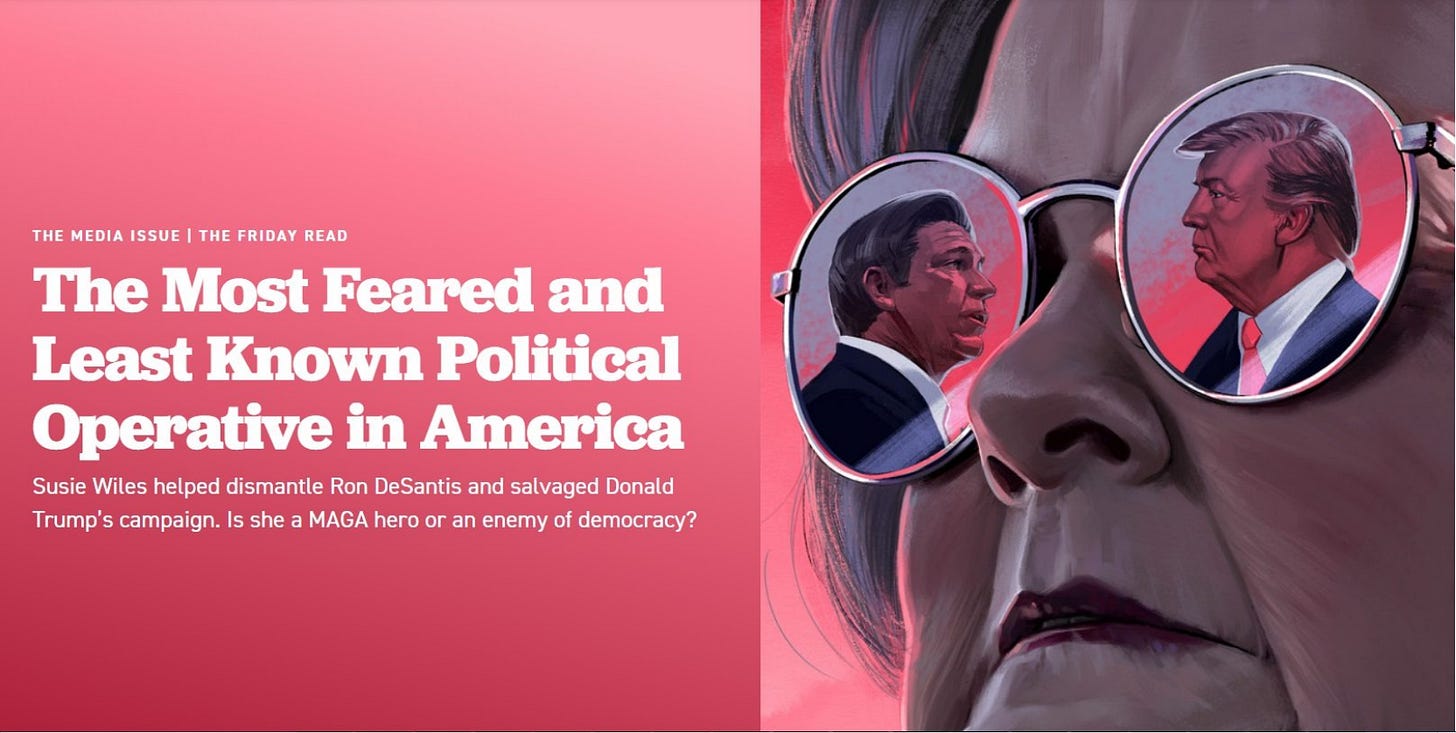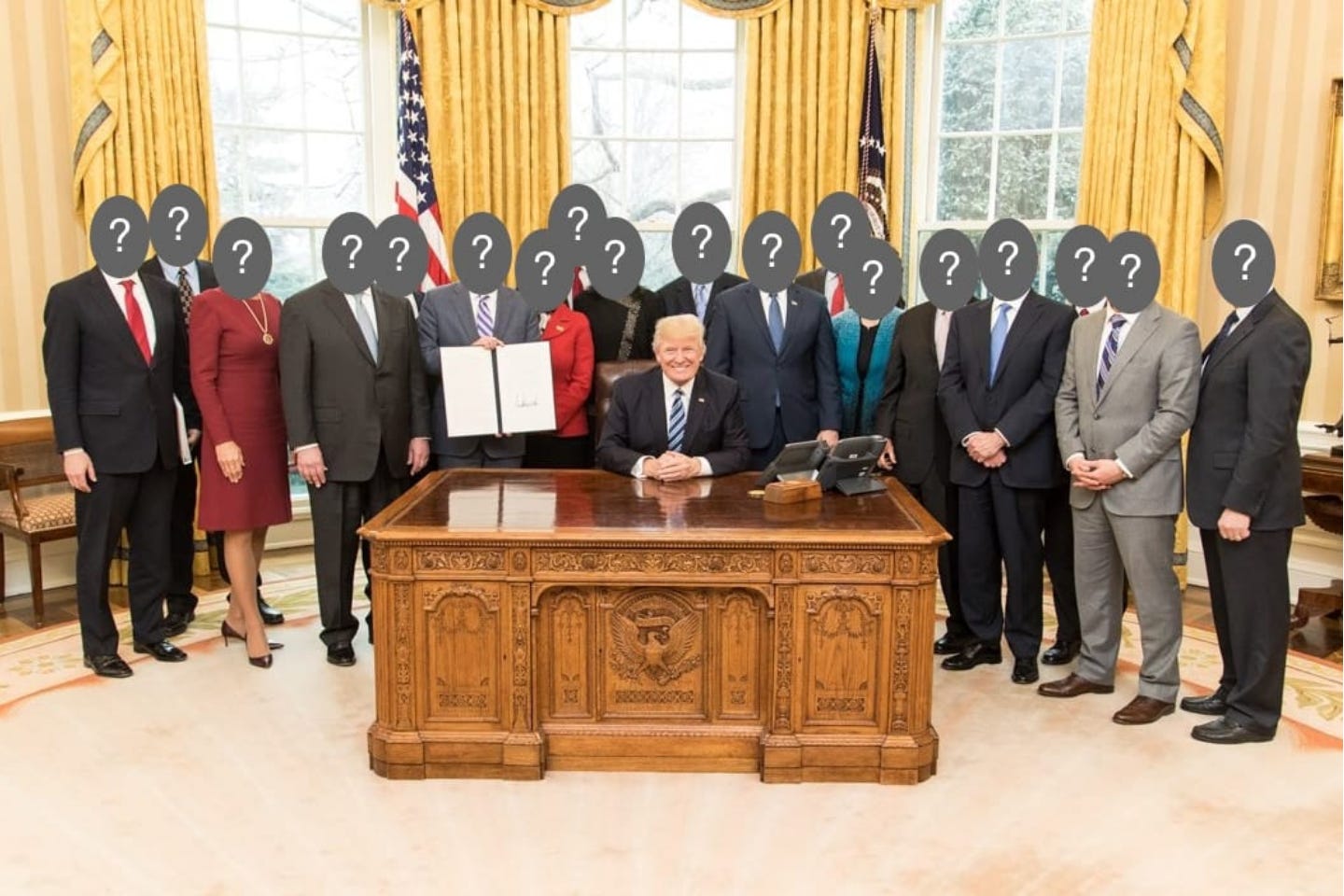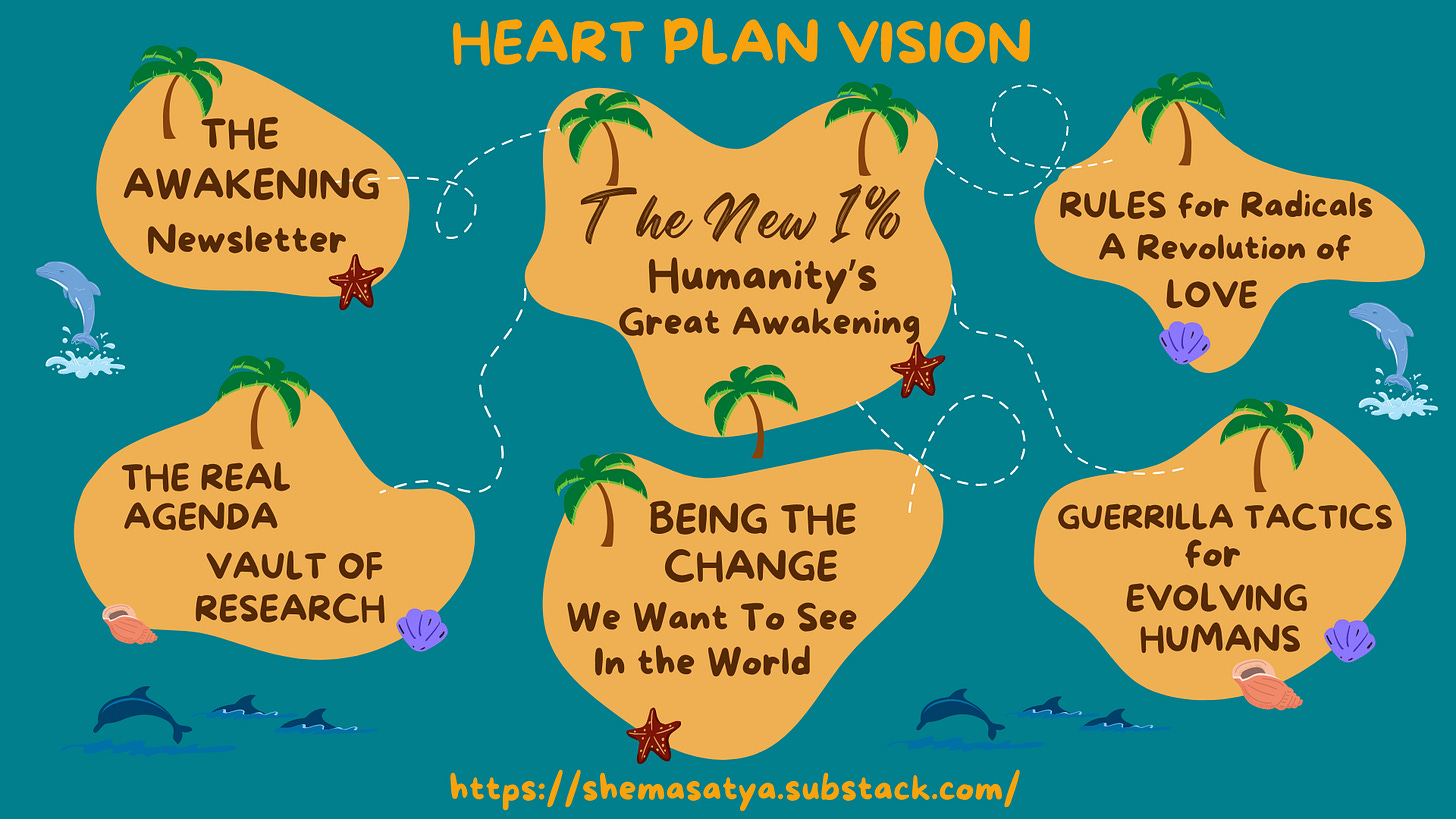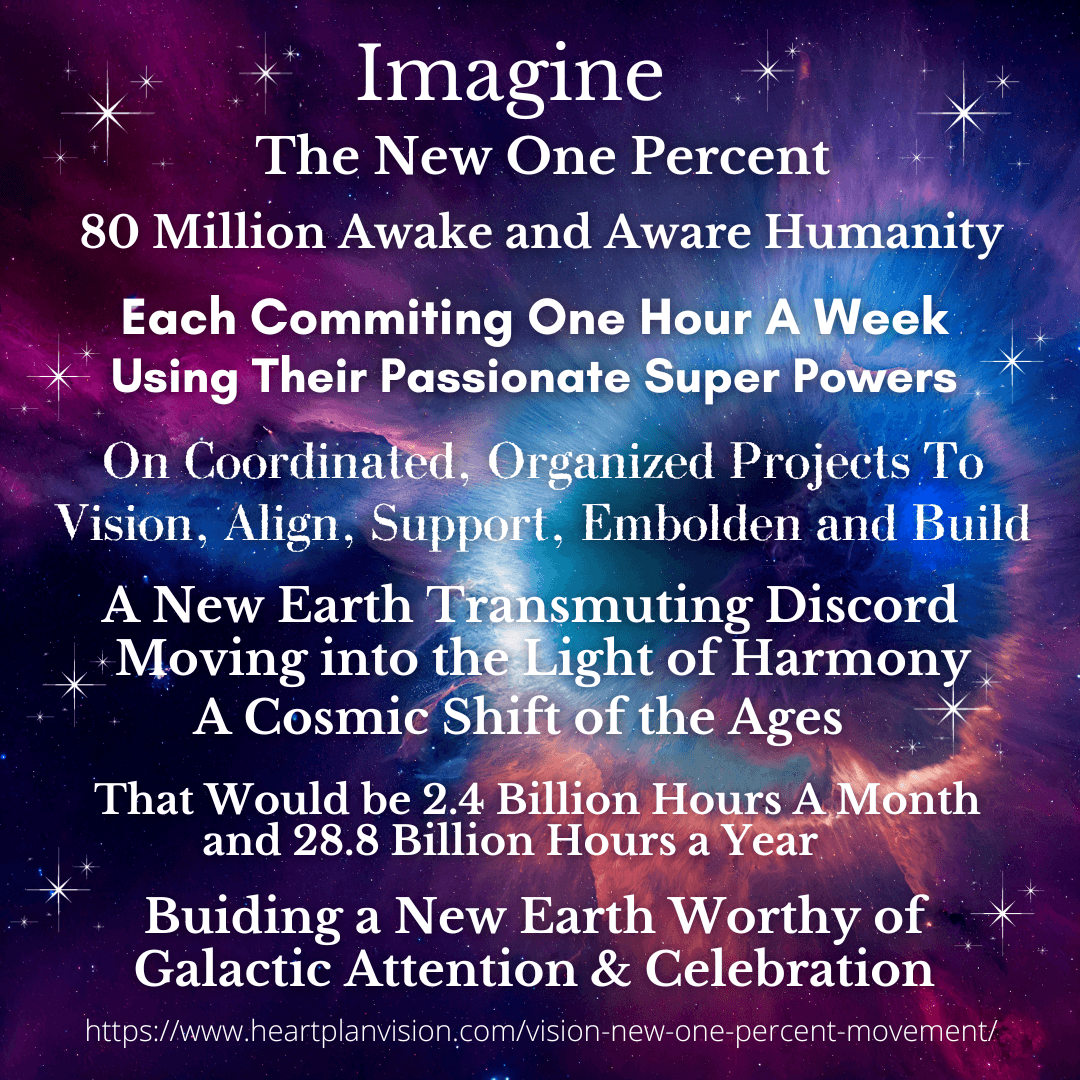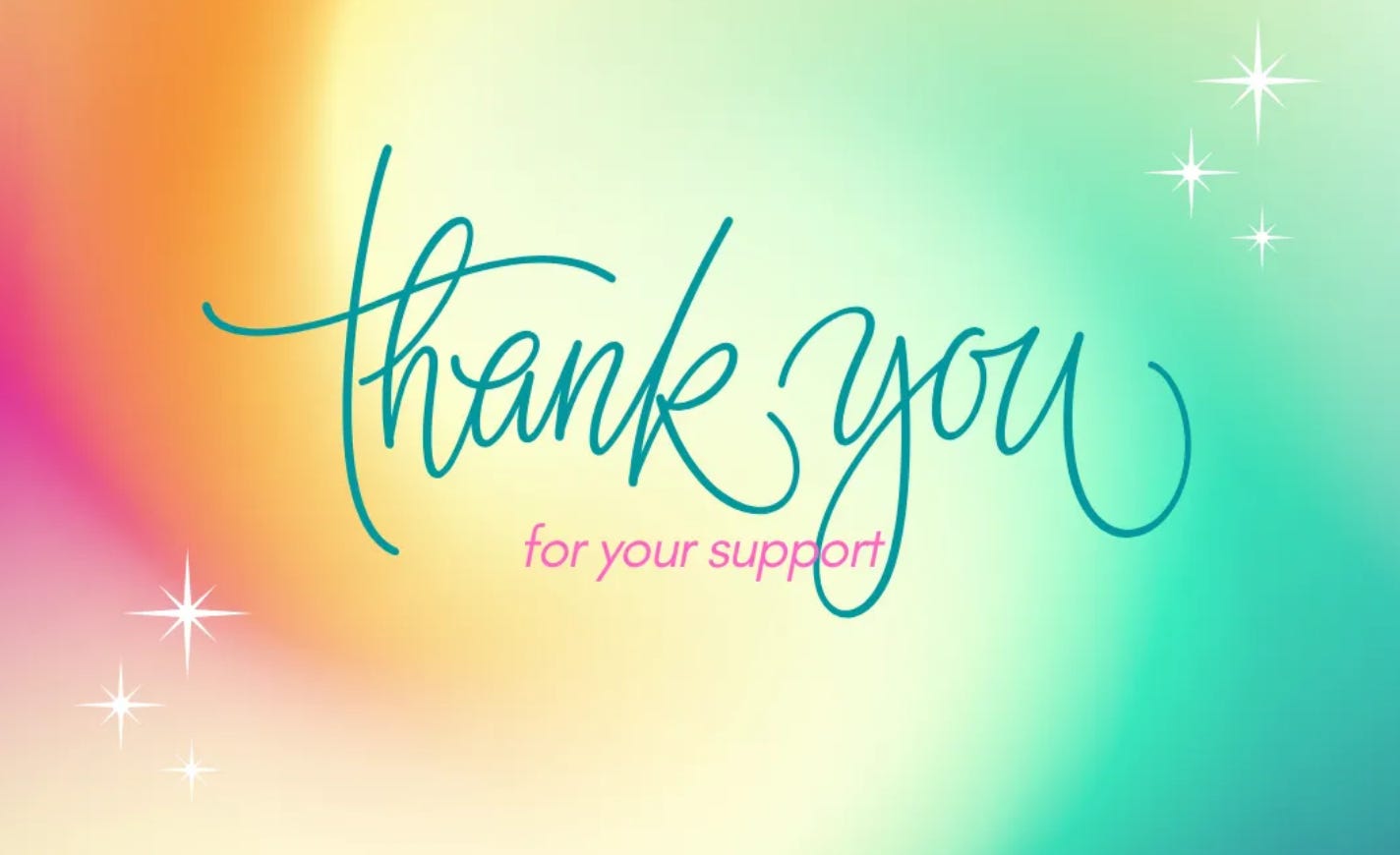Draining the Swamp or How To Bring Transparency to Governance
What Would Ethical Governance Look Like?
We are just a week into Trump’s re-election, November 2024, and already the leanings are that he is refilling the SWAMP. The details of the individuals I will leave for another Substack article. Or just check the news. Everyday we are hearing of his latest additions.
For now let’s just look at what happened on day 2 of Trump winning re-election.
Trump hires Susie Wiles to be his Chief of Staff.
🌟 Here Are Some Articles and Videos Looking Into Susie Wiles - Former Pharma Lobbyist To Run Trump White House
✳ Tom Renz talking with Alex Jones - short video clip
Susie Wiles and UniParty Policy - Mercury, LLC, UniParty vs. We the People
———————————————
✳ Interview of Tom Renz Exposing Trump's Chief of Staff Susie Wiles Banned From BANNED.VIDEO
Full interview
———————————————
✳ Trump Announces Former Big Pharma Lobbyist to Run White House Staff
Nov 7 2024
SWAMP Watch – First Edition
by Brian Shilhavy
Editor, Health Impact News
The President Chief of Staff is a position that does NOT have to be approved by the Senate, and is typically one of the first appointments made of a newly elected President, as this person will guide the President in choosing the rest of his staff and cabinet.
This speaks volumes about who Trump is going to surround himself with in his new administration, and remaining true to his original loyalties during his first term, he went with former Big Pharma lobbyist Susie Wiles, who has previously worked as a lobbyist for some of the largest manufacturers of vaccines, including Pfizer.
———————————————
✳ Susie Wiles Is a Lobbyist for Big Pharma. She’s Also a Key Advisor to President Trump. That’s a Problem.
Back in May 2024 Liam Sturgess Reported on this.
———————————————
🌟 What Would A Cabinet Dream Team Look Like?
Let’s Discuss
✳ Trump's Cabinet Dream Team
A 12 min video clip
In this clip from last month's Fireside Live, Foster Gamble reveals that he is excited about the dream team that has coalesced around Trump, including RFK Jr, Tulsi Gabbard, and Elon Musk.
Will his actual appointments hold up to Foster's hopes?
Go to www.freetothrive.com to find the Thrive Documentary Series and hundreds of hours of free content from the Freedom Portal.
Subscribe to participate in interactive episodes of Fireside Live and gain access to this episode and all full-length versions of the show.
✳ Imagine Your Dream Team Cabinet
We are looking at an increasingly trans-partisan, anti-deep state alliance of integrous individuals coming together around the principles of truth and freedom rather than political party power.
A Foster Gamble (the Thrive movies) Blog post
———————————————
🌟 Ethical Governance
An AI Generated Answer in Brave Search Engine - Please verify for accuracy - just use as a springboard for deeper conversations
Ethical governance refers to the values, behaviors, processes, procedures, culture, and ways of doing and being that ensure high standards of performance, economy, effectiveness, efficiency, quality, and satisfaction. It is a critical component of responsible research and innovation (RRI) and essential for building trust in robotics and artificial intelligence systems.
Key Principles
Transparent Decision-Making: Ethical governance involves open and democratic decision-making processes, ensuring that all stakeholders are represented and involved in the decision-making process.
Values-Based Culture: Organizations must cultivate a culture that embodies ethical values, such as integrity, accountability, and transparency, and ensure that these values are reflected in all aspects of operations.
Holistic Approach: Ethical governance requires a comprehensive and integrated approach, considering the organization’s strategic objectives, processes, policies, and practices.
Accountability: Ethical governance ensures that individuals and organizations are held accountable for their actions and decisions, and that there are mechanisms in place for addressing ethical concerns and breaches.
Stakeholder Engagement: Ethical governance involves engaging with stakeholders, including employees, customers, investors, and the broader community, to ensure that their needs and concerns are considered and addressed.
Best Practices
Ethics and Leadership Coaching: Provide ethics and leadership coaching to executives and employees to promote a culture of ethical governance.
Governance Framework: Develop a comprehensive governance framework that outlines policies, procedures, and practices for ethical decision-making.
Risk Management: Implement robust risk management processes to identify and mitigate potential ethical risks and ensure compliance with regulatory requirements.
Transparency and Reporting: Ensure transparency in reporting and disclose any ethical concerns or breaches to stakeholders.
Continuous Improvement: Regularly review and update ethical governance policies and procedures to ensure they remain effective and relevant.
Real-World Examples
Avista Corporation: Avista Corporation prioritizes ethical governance, promoting transparency, accountability, and engagement among stakeholders. They strive to establish a strong and independent board, promote diversity, and ensure shareholders have a voice in company decisions.
Ethical Governance Services: Organizations like Ethical Governance offer ethics and leadership coaching, training, and mentoring programs to help clients develop a culture of ethical governance.
By embracing these principles and best practices, organizations can establish a strong foundation for ethical governance, promoting trust, resilience, and long-term success.
———————————————
🌟 You Can Look Online and Find Many Opinion Pieces on THE SWAMP. Here are a few.
✳ Neither Trump Nor Harris Wants To Drain the Swamp. They Want You To Join It.
Both candidates have promised a litany of special favors to handpicked constituencies. If you don't fit into the right categories, you'll pay the price.
✳ Can the Swamp be Drained?
By Steve McCann
✳ “Draining the Swamp” as a Metaphor for Control
By Anna Myers
———————————————
🌟 I Asked ChatGPT to Summarize the Meaning of Trump’s Drain The Swamp and How He Actually Surrounded Himself with the SWAMP
Here is the answer - Note this is just a springboard to have a deeper conversation. Remember the AI can be inaccurate, or even have leanings towards certain viewpoints.
The phrase "Trump hiring and surrounding himself with the SWAMP" refers to criticism that Donald Trump, despite campaigning on a promise to "drain the swamp"—a metaphor for eliminating entrenched corruption, bureaucratic inefficiency, and special interests in Washington, D.C.—ended up appointing individuals to his administration who were perceived to represent those very characteristics.
Key Elements of the Criticism:
Campaign Promise vs. Reality:
During his 2016 campaign, Trump used "drain the swamp" to signal a commitment to removing career politicians, lobbyists, and others seen as prioritizing personal gain over public interest.
Critics argue that he contradicted this promise by hiring insiders, lobbyists, and wealthy elites with strong ties to corporate or political establishments.
Examples of "Swampy" Behavior:
Appointing cabinet members or advisors with ties to Wall Street, such as former Goldman Sachs executives.
Hiring individuals later accused of unethical practices, conflicts of interest, or self-enrichment.
Engaging figures known for benefiting from the political or financial systems he claimed to oppose.
Why Some Call It "The Swamp":
The term "swamp" symbolizes the entrenched network of influence-peddling, revolving doors between government and private industries, and cronyism in D.C.
Critics suggest Trump expanded, rather than reduced, this dynamic by choosing figures with connections to special interests or controversial pasts.
Defenders' Argument:
Supporters of Trump argue that some of these appointments were pragmatic decisions to ensure governance and expertise.
Others suggest the appointments were necessary to navigate an already "swampy" system, rather than an endorsement of the system itself.
The phrase highlights a perceived hypocrisy: promising revolutionary change but making choices that critics felt reinforced the status quo.
———————————————
🌟 Some Online Opinion Pieces Summarized - Can the SWAMP Be Drained, and How?
Here I ask ChatGPT
to explore the challenges and potential strategies for addressing systemic corruption, inefficiency, and entrenched power in Washington, D.C. Here's a summary of major points and insights on whether and how the "swamp" can be drained:
Major Points
Historical Context:
Donald Trump popularized the phrase "drain the swamp" during his 2016 campaign, reviving a concept previously used by Ronald Reagan to address government inefficiency and corruption.
Both Reagan and Trump failed to achieve their goals due to political resistance and the sheer scale of entrenched interests.
Obstacles to Draining the Swamp:
Spending and Lobbying:
Discretionary spending has grown dramatically, increasing by 200% since 1999, outpacing inflation significantly.
A network of 13,000 lobbyists spends over $4 billion annually, fueling corruption and influencing Congress to maintain the status quo.
Government Bureaucracy:
The federal government encompasses 430 departments, agencies, and sub-agencies, employing millions of workers who are protected by robust civil service laws, making them nearly impossible to dismiss.
Federal contract employees (estimated at 8–10+ million) further complicate efforts to reduce government size.
Judiciary Resistance:
A Left-leaning judiciary is likely to block executive orders aimed at reducing government power or dismissing employees.
This adds another layer of protection to the existing bureaucratic system.
Political Will:
Congress lacks the appetite to cut spending or reduce government size, as members benefit directly from the existing system through political donations, insider information, and other perks.
Challenges of Incremental Reform:
Incremental approaches to reform are deemed ineffective due to the vast size and complexity of the "swamp."
Can the Swamp Be Drained?
Yes, but only through radical and systemic measures. Incremental reform is unlikely to succeed given the entrenched nature of corruption, bureaucracy, and political incentives.
How Can It Be Drained?
Abolishing Entire Departments and Agencies:
Congress and the president must work together to eliminate or restructure agencies, as all were created through legislative acts.
Specific targets include:
Intelligence agencies (e.g., CIA, NSA, FBI) to be disbanded and consolidated into fewer, more focused entities.
Health bureaucracies (e.g., FDA, CDC) to be replaced in light of perceived failures during COVID-19.
Termination of Federal Employees:
Employees in eliminated agencies would lose their positions, effectively cutting the federal workforce.
Streamlining Government Functions:
Agencies that survive should be merged into more efficient, less intrusive entities.
Constitutional Legitimacy:
Article One, Section 8 of the Constitution gives Congress the authority to create and eliminate agencies, limiting the judiciary’s ability to interfere in these processes.
Political Strategy:
A Republican-controlled Congress and presidency are essential.
The Senate must use the budget reconciliation process to bypass opposition and achieve these objectives with a simple majority.
Unified Republican Effort:
Success requires a cohesive Republican strategy and leadership, particularly from the president, to keep members focused and committed.
Public Support:
The citizenry must elect representatives committed to reducing government size and corruption.
Consequences of Failure:
If Trump and a Republican Congress fail to act decisively, the "swamp" will grow larger and more corrupt, becoming increasingly resistant to reform.
A Biden reelection would accelerate this trend, rendering the "swamp" permanently undrainable.
Conclusion:
Draining the swamp is an immense challenge requiring radical actions rather than incremental reforms. The plan demands political alignment, public support, and decisive measures to dismantle entrenched systems of corruption and inefficiency. Without these, the swamp will continue to grow, solidifying its power and influence indefinitely.
———————————————
🌟 My Encouraging Concluding Thought Is This. Let Us Be Encouraged. I Really Do Not Sense the American People Are Going to Stand Down While the Swamp is Refilled.
And! It Is Up to Each of Us to Engage!
———————————————
🌟 🌟 🌟 🌟 🌟
———————————————
✳ LET US BE THE CHANGE WE WANT TO SEE IN THE WORLD ✳
IF NOT NOW, THEN WHEN?
———————————————
🌟 We Also Invite You
✳ JOIN ‘THE AWAKENING’ NEWSLETTER
Besides These Substack Posts on Individual Topics
Shema invites you to sign up for her weekly Newsletter delivered via email
‘THE AWAKENING’
Learn about the Growing Critical Mass for New Earth!
Gain Courage and Clarity to Exit the Matrix
Along with coverage of critical global events
SIGN UP HERE
✳ THE NEW ONE PERCENT MOVEMENT
Read about the Vision for Building a Critical Mass
FOR HUMANITY’S GREAT AWAKENING
SEE THE VISION HERE
✳ ENVISIONING A NEW WORLD, A COLLECTION OF UTOPIA TYPE STORIES
These Utopian themes have been written and compiled by Shema Satya over the last year. What can we build from these ideas?
✳ THE REAL AGENDA
Shema has compiled a Vault of Research regarding the COVID Operation
Over 300 topic pages organized into 3 Portals
Information that continues to be extremely relevant to our times
THE REAL AGENDA BODY OF RESEARCH
✳ HEART PLAN VISION
Living a Heart Centered Life. Syncing up the heart and mind for humanity’s next great evolutionary leap in consciousness and being.
———————————————
Shema Satya
I offer this content FREE, there is no paywall.
For those who are able,
supporting my work with financial donations is hugely appreciated.
You can donate with subscriptions through my Substack account
Additional Ways to Contribute Are Listed Here
Thank you so much.
It is my mission to continue to inform, inspire and highlight ways to best contribute to building a new world that works for the benefit and good of all. Always with the key focus on grass roots empowerment, decentralization, and mobilization.




